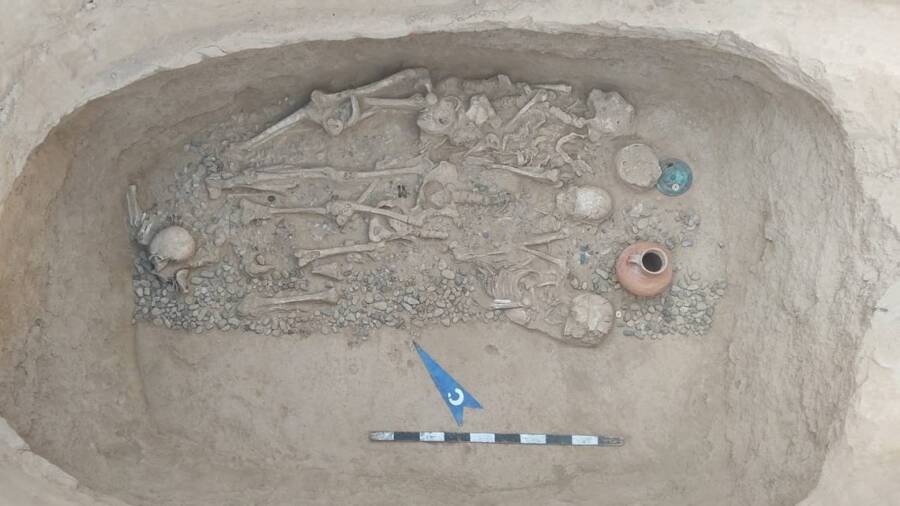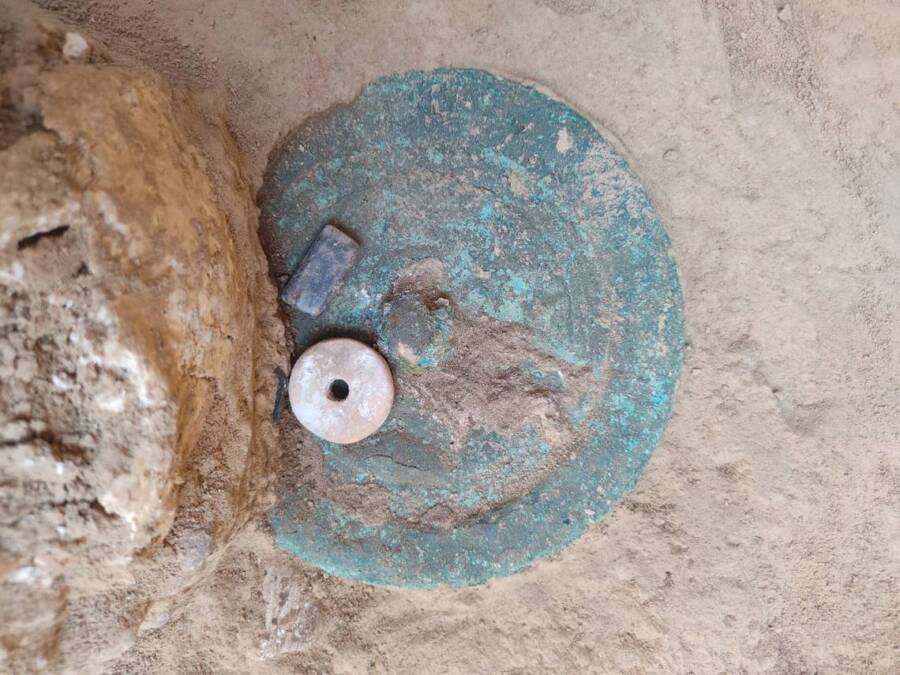Ancient Kangju Burial Mound Uncovered in Kazakhstan Reveals 2,000-Year-Old Gold Jewelry and Mirror
In Kazakhstan, archaeologists have discovered gold jewelry, arrowheads, and a sizable bronze mirror in three burial mounds at the Tolebaitobe cemetery in the Turkestan region.
In present-day Kazakhstan, looters once stumbled upon a series of ancient graves. After looting two of them, they fled with their stolen goods, unaware of a third nearby grave. Archaeologists have now excavated this untouched grave and uncovered a wealth of grave goods.
The artifacts date back to the Kangju state, a little-known political entity that governed the area between the fifth and fourth centuries B.C. These discoveries highlight the highly skilled craftsmanship of the period when the Kangju state traded with ancient Rome, China, and the Kushan Empire, as stated by representatives of Turkistan’s regional government.
Among the grave goods were a pair of moon-shaped earrings adorned with blue amethyst and ruby from the first century B.C.E., a Roman fibula used as a clothing pin, large and small beads, a shoe, a belt, a buckle, and bird-hunting arrowheads.

The grave, estimated to be around 2,000 years old, is probably associated with the little-known Kangju state. Photo: Ozbekali Zhanibekov, South Kazakhstan Pedagogical University
The archaeologists also made the remarkable discovery of a circular bronze mirror, likely originating from China during the Han dynasty (206 BCE to 220 CE).
As noted in the statement, these types of objects were highly prized across Eurasia, with similar mirrors found in regions such as Afghanistan and the southern Ural. This suggests that the woman buried with the mirror was of considerable wealth and influence.
According to the statement from Ozbekali Zhanibekov South Kazakhstan Pedagogical University, the grave’s contents imply that the woman was likely an elite member of society.

The bronze mirror seems to originate from China’s Han dynasty, indicating that the Kangju state had influential trading partners. Photo: Ozbekali Zhanibekov, South Kazakhstan Pedagogical University.
She seems to have lived during the reign of the enigmatic Kangju state, which governed the region between the fifth and fourth centuries B.C.E.
Examining the discovered artifacts reveals that the Kangju state had interactions with formidable and influential empires,” the university statement mentions. “Rome, Byzantium, Kushan, and China all maintained equal diplomatic relations with the Kangju state.